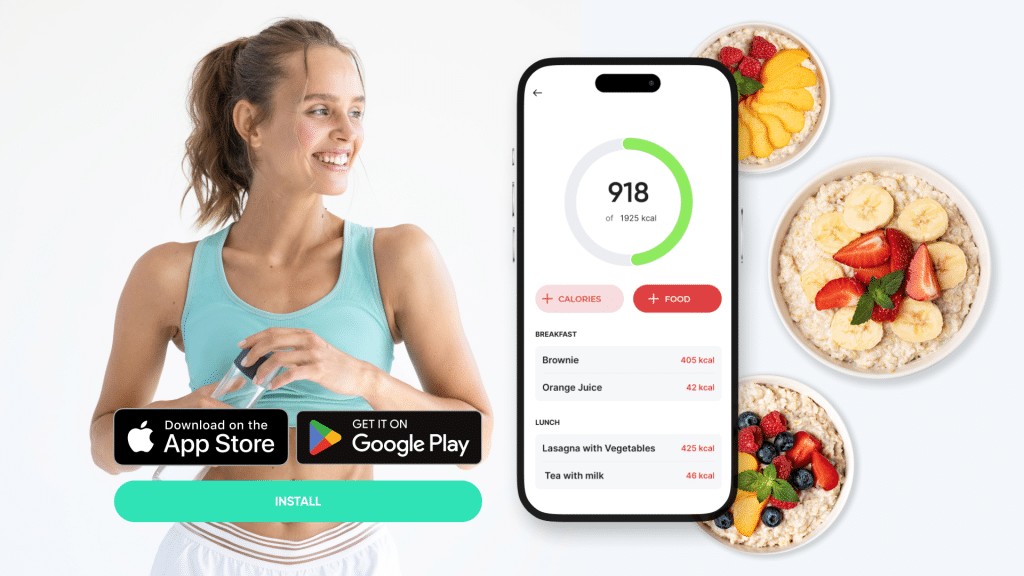Why Do I Crave Peanut Butter? If you’ve ever pondered this question while reaching for a spoon and a jar of creamy, nutty goodness, you’re not alone. The sudden urge for peanut butter is a common experience, and at WHY.EDU.VN, we’re here to explore the possible explanations, from nutritional deficiencies to stress responses, and offer solutions to manage those cravings. Understanding these drivers can empower you to make informed choices and maintain a balanced lifestyle.
1. Decoding the Peanut Butter Craving: What Does it Mean?
The allure of peanut butter is undeniable for many. But constantly craving peanut butter is not a coincidence. Your body might be signaling something more than just a desire for its delicious taste. That’s why at WHY.EDU.VN, we strive to uncover the truth behind your cravings.
Craving peanut butter could indicate several underlying factors. It could mean your body needs specific nutrients, or it could be linked to emotional or psychological triggers. According to a study in the Journal of the American College of Nutrition, food cravings can sometimes reflect nutritional deficiencies or imbalances (1). Let’s explore some of these reasons in detail.
2. Nutritional Needs: Could Peanut Butter Be the Answer?
Peanut butter is a powerhouse of nutrients. Natural peanut butter, made solely from peanuts, boasts a rich profile of fats, proteins, carbohydrates, and fiber. According to the USDA, 100 grams of peanuts contain approximately 567 calories, 49.2g of fats, 25.8g of proteins, 16.1g of carbohydrates, and 8.5g of fiber (5). These nutrients play vital roles in maintaining your body’s functions.
2.1. The Fat Factor: Are You Missing Healthy Fats?
Many people wrongly believe that fat is bad. However, fats are essential for hormone production, cell function, and energy storage. Health guidelines recommend that 20-35% of your daily calories should come from fat. A deficiency may lead to cravings for fat-rich foods like peanut butter.
A study published in the American Journal of Clinical Nutrition found that diets lacking in healthy fats can lead to increased cravings for high-fat foods (7). Peanut butter is rich in monounsaturated fats, considered heart-healthy.
2.2. Protein Power: Fueling Your Muscles and More
Protein is crucial for building and repairing tissues, producing enzymes and hormones, and supporting overall health. The Recommended Dietary Allowance (RDA) for protein is 0.8 grams per kilogram of body weight. Active individuals might need more.
Peanut butter is a good source of protein, offering approximately 25.8 grams per 100 grams. A protein deficiency can manifest as cravings for protein-rich foods. A study in the journal Obesity showed that increasing protein intake can reduce cravings and improve satiety (8).
2.3. Calorie Crunch: Are You Eating Enough?
Calorie intake is vital for energy levels and overall well-being. Restrictive diets, especially those with very low-calorie intakes (below 800 calories per day), can be detrimental. A lack of calories can trigger cravings for calorie-dense foods like peanut butter.
Peanut butter, with its high calorie content, provides a quick energy boost. Additionally, the carbohydrates in peanut butter (22.3 g/100 grams) contribute to energy production. According to the National Institutes of Health, adequate calorie intake is crucial for maintaining energy levels and preventing nutritional deficiencies (9).
3. The Emotional Connection: Stress and Peanut Butter
Stress can significantly impact your food cravings. When stressed, your body releases cortisol and other hormones, increasing appetite, particularly for sweet and fatty foods. Peanut butter, being both calorie-rich and comforting, becomes an appealing choice.
Research published in the journal Physiology & Behavior suggests that stress-induced cortisol release can enhance the reward value of palatable foods, leading to increased cravings (10).
4. The Downside of Overindulgence: Is Too Much Peanut Butter Bad?
While peanut butter offers numerous health benefits, moderation is key. Overconsumption can lead to unwanted consequences.
4.1. Calorie Overload: The Weight Gain Risk
Peanut butter is calorie-dense, meaning it packs a lot of calories into a small serving. Eating large quantities can quickly lead to a calorie surplus, contributing to weight gain.
The Dietary Guidelines for Americans recommend being mindful of portion sizes to prevent excess calorie intake (11). Stick to the recommended serving size of 2 tablespoons.
4.2. Allergic Reactions: A Serious Concern
Peanut allergies are common and can be severe. Allergic reactions occur when the body mistakenly identifies peanuts as a harmful substance, triggering an immune response.
Symptoms can range from mild (runny nose, itchy eyes, stomach ache) to severe (hives, anaphylaxis). If you suspect a peanut allergy, avoid peanut butter and seek medical advice. According to the Asthma and Allergy Foundation of America, peanut allergies affect millions of people worldwide (12).
4.3. Weight Loss Woes: Sabotaging Your Goals
If you’re trying to lose weight, excessive peanut butter consumption can hinder your progress due to its high calorie and fat content.
However, moderate amounts can be included in a balanced diet. The protein and fiber in peanut butter promote satiety, helping you feel full and satisfied. A study published in the International Journal of Obesity found that incorporating protein and fiber-rich foods can aid in weight management (13).
5. Taming the Craving: Practical Strategies
Fortunately, you can manage your peanut butter cravings effectively.
5.1. Optimize Your Diet: Balancing Nutrients
Adding healthy fats to your diet can reduce cravings for peanut butter. Healthy fats include monounsaturated and polyunsaturated fats, found in foods like avocados, olive oil, and nuts.
Research suggests that incorporating healthy fats can improve satiety and reduce cravings for unhealthy options.
| Strategy | Description | Benefits |
|---|---|---|
| Cook with healthy fats | Use olive oil or canola oil for cooking. | Provides essential fatty acids, improves satiety, and reduces cravings for unhealthy fats. |
| Embrace fat-rich ingredients | Include avocados, nuts, and seeds in your diet. | Offers a good source of monounsaturated fats, vitamins, and minerals. |
| Choose whole milk | Opt for whole milk over low-fat alternatives. | Provides essential nutrients and healthy fats. |



5.2. Boost Your Protein Intake: Fueling Your Body
Protein deficiency can trigger peanut butter cravings. Include protein-rich snacks and prioritize protein at mealtimes.
A study published in the American Journal of Clinical Nutrition demonstrated that increased protein intake can reduce appetite and cravings (14).
| Strategy | Description | Benefits |
|---|---|---|
| Protein-rich snacks | Greek yogurt, hard-boiled eggs, hummus, or a small serving of peanut butter. | Provides sustained energy, reduces hunger, and helps meet protein requirements. |
| Eat protein first | Start your meals with protein sources to stimulate peptide YY (PYY) production. | Increases satiety, reduces overall food intake, and helps control cravings. |
5.3. Stress Management: Finding Your Calm
Stress is a significant trigger for food cravings. Incorporate stress-reducing activities into your routine, such as exercise, meditation, or yoga.
Research indicates that exercise and meditation can lower cortisol levels and reduce stress-related food cravings.
| Activity | Description | Benefits |
|---|---|---|
| Exercise | Brisk walking, jogging, or any physical activity you enjoy. | Improves mood, reduces stress, and helps maintain a healthy weight. |
| Meditation | Take a break from your busy schedule to relax and clear your mind. | Reduces stress, promotes relaxation, and improves overall well-being. |
| Yoga | Combines physical postures, breathing techniques, and meditation. | Enhances flexibility, reduces stress, and promotes mental clarity. |
| Self-care | Engage in activities you find enjoyable and relaxing. | Helps reduce stress and improve overall mood. |
6. Real-Life Scenarios: Addressing Specific Cravings
Let’s consider a few specific scenarios to illustrate how these strategies can be applied.
6.1. Craving Peanut Butter and Apple Wrap in the Morning
This craving could indicate a need for both protein and healthy fats to start your day.
- Solution: Ensure you’re including adequate amounts of protein and healthy fats in your breakfast. Add a source of protein such as Greek yogurt or eggs to your morning routine.
6.2. Craving Peanut Butter and Banana Toast Due to Stress
This craving may be triggered by stress-induced cortisol release.
- Solution: Incorporate stress-reducing activities into your daily routine. A brisk walk or a short meditation session can help alleviate stress and reduce cravings.
6.3. Vegan Craving Peanut Butter
Vegans may crave peanut butter due to a lack of protein in their diet.
- Solution: Focus on including a variety of plant-based protein sources such as legumes, tofu, and quinoa in your diet.
7. The Expert Opinion: Insights from Nutritionists
According to registered dietitian Sarah Greenfield, “Peanut butter cravings can often be a sign that your body is seeking essential nutrients like healthy fats and protein. Paying attention to these cues and incorporating balanced meals can help manage these cravings effectively.”
8. Unveiling More Answers at WHY.EDU.VN
At WHY.EDU.VN, we understand the importance of finding reliable and accurate information. That’s why we’re dedicated to providing expert-backed answers to your burning questions. If you’re curious about other food cravings or nutritional needs, our website offers a wealth of resources.
9. Frequently Asked Questions (FAQs)
Here are some frequently asked questions about peanut butter cravings:
9.1. Why Do I Eat a Spoonful of Peanut Butter?
Eating a spoonful of peanut butter can be driven by its nutritional value, satiety, taste, convenience, and health benefits.
9.2. What Happens to Your Body When You Eat Peanut Butter Every Day?
Eating peanut butter daily in moderation can offer various health benefits due to its nutrient-rich profile.
9.3. Why Do I Feel So Good After Eating Peanut Butter?
Feeling good after eating peanut butter can be due to the release of endorphins, the satisfaction of hunger, and the taste and texture.
9.4. Is Peanut Butter Good for Weight Loss?
In moderation, peanut butter can be included in a weight loss diet due to its protein and fiber content, which promotes satiety.
9.5. What Are the Best Types of Peanut Butter to Eat?
Natural peanut butter without added sugars or oils is the best choice for maximizing health benefits.
9.6. Can Peanut Butter Cause Acne?
While peanut butter itself doesn’t directly cause acne, excessive consumption can contribute to inflammation and potentially worsen acne in some individuals.
9.7. Is Peanut Butter Good for Muscle Building?
Peanut butter is a good source of protein, which is essential for muscle building and repair.
9.8. Why Do I Crave Peanut Butter During Pregnancy?
Pregnancy can increase nutritional needs, leading to cravings for nutrient-rich foods like peanut butter.
9.9. How Much Peanut Butter Is Too Much?
The recommended serving size is 2 tablespoons per day.
9.10. Can Peanut Butter Help With Sleep?
The magnesium in peanut butter can help promote relaxation and improve sleep quality.
10. Call to Action: Explore More at WHY.EDU.VN
Still curious about your cravings? Do you have more questions about nutrition and health? Visit WHY.EDU.VN today and explore a world of expert-backed answers. Our team of specialists is here to provide you with the information you need to make informed choices and live a healthier, happier life. Contact us at 101 Curiosity Lane, Answer Town, CA 90210, United States. Whatsapp: +1 (213) 555-0101. Visit our website: why.edu.vn.
The Bottom Line: Mindful Consumption
While peanut butter offers numerous health benefits, it’s important to consume it mindfully. Understanding your cravings and making informed choices can help you enjoy peanut butter as part of a balanced and healthy lifestyle.
References:
- Journal of the American College of Nutrition
- National Institutes of Health
- USDA FoodData Central
- American Journal of Clinical Nutrition
- Obesity
- Physiology & Behavior
- Dietary Guidelines for Americans
- Asthma and Allergy Foundation of America
- International Journal of Obesity
- American Journal of Clinical Nutrition
